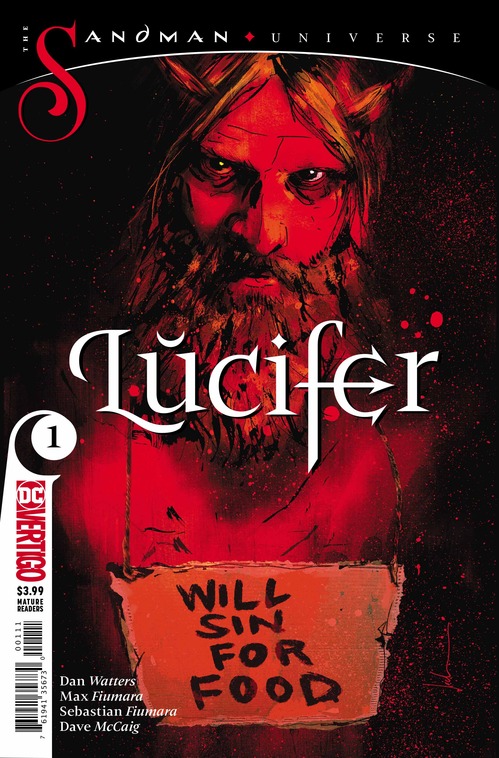Lucifer Writer Dan Watters Dissects the Fragments of Satan
Main Art by Jock Comics Features Dan Watters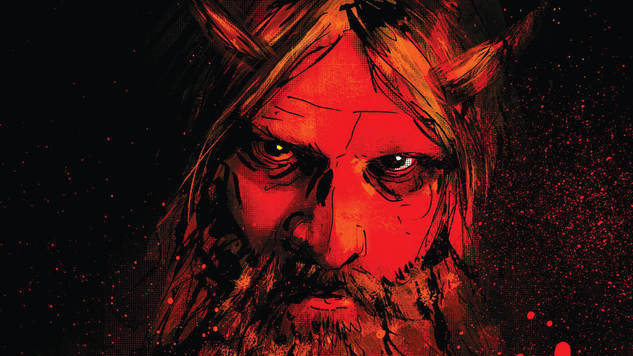
Of the four inaugural Sandman Universe titles, none stands in a longer shadow than Lucifer. Beyond Neil Gaiman’s influential portrayal in the pages of Sandman, beyond Mike Carey and Peter Gross’s expertly constructed solo series, beyond his various DC Comics appearances since, few characters have played such a key role across different media than the devil himself—why, even God typically remains just off camera. Yet over the course of a puzzle-box first issue, Dan Watters, Max Fiumara, Sebastian Fiumara and Dave McCaig (re)introduce a Prince of Lies who is at once comfortingly familiar and undeniably changed from the last time we saw him gallivanting about. This isn’t exactly the Lucifer we know—and the book is all the better for it. Watters, who has spun similarly devilish tales like Limbo and Deep Roots over the last few years, has a wealth of Satanic voices populating his head, and in advance of Lucifer #1, in stores this week, we invited him to break down a few of the most influential Lightbringers leaving their mark on his interpretation of the original fallen angel.
![]()
Lucifer Writer Dan Watters on the Fragments of Satan:

Paradise Lost Art by Gustave Dore
Paradise Lost: Satan
Right, let’s get this one out of the way, shall we? John Milton’s 1667 epic poem is obviously the biggest influence on our iteration of Lucifer if we go back to Sandman—and with very good reason. Milton infused the character with a Romantic nobility, gave an idealism to his defiance and made him simply a hell of a lot of fun compared to the comparably stuffy God who turns up in the poem. In fact, so influential is this poem that it marks the point at which, in popular consciousness, we began to amalgamate the fallen angel Lucifer with Satan, the ruler of Hell. So very possibly the most important make-over the devil’s ever had.
![]()
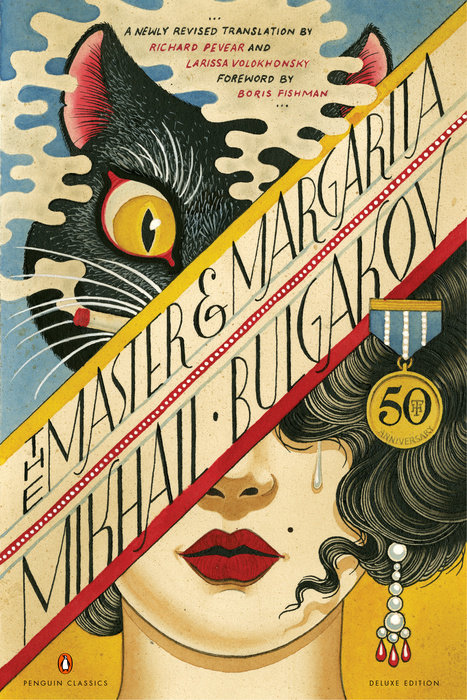
The Master & Margherita Cover Art via Penguin Random House
The Master & Margherita: Woland
In Mikhail Bulgakov’s 1937 novel, Woland is a mysterious foreign professor knocking around Moscow. Much like our Lucifer, he has an entourage, and seems to enjoy spending his time with witches, demons and—possibly most importantly—a giant machine-gun-wielding housecat named Behemoth (I cannot overstate how much I love this book). Woland is also a catalyst for everything that happens around him; rather than particularly preying on mankind’s weaknesses, he’s simply there for them. I like the idea of viewing the devil as more of a through-thread of human darkness, rather than trying to objectively blame him for it. The latter very much feels like passing the buck, since we’re perfectly capable of damning ourselves, thank you very much.
![]()
Faust: Mephistopheles
There are so many different takes on the Faust legend, and Mephistopheles is certainly the archetypal devil-as-tempter. The most prominent are most likely Marlowe’s Doctor Faustus (1592), and Goethe’s Faust (1829). The opening of Goethe’s, his co-opting of the book of Job, always really gets to me. In the descriptively titled “Prologue in Heaven”, archangels Raphael, Gabriel and Michael are ornately espousing the glory of the Lord. Mephistopheles shows up with his tongue rammed in his cheek to snark at everything they’ve said, essentially mocking God to his face in order to be allowed to go torment Faust. This is blasphemy as pure joy, as opposed to Milton’s Satan’s oh-so-serious suffering. Into the Luciferian pot it goes.
![]()
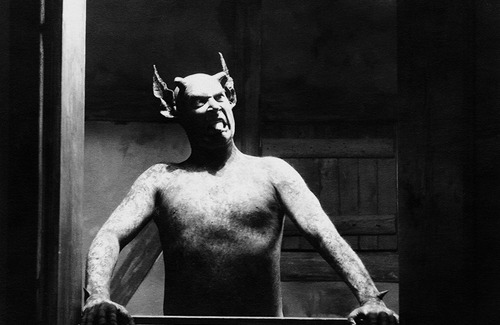
Häxan Screenshot via The Criterion Collection
Häxan: The Devil
I’m gonna cheat a bit and use the devil from Benjamin Christensen’s 1922 film Häxan as a stand-in for the devil as he appears in a whole load of witchy European folklore. A faux-documentary, Häxan brought this version (played by the director himself) to life in a way that still looks absolutely magnificent as we edge towards the film’s centenary. As we move into this new era of Lucifer, we’ve been looking in a big way towards folkloric stories of the devil, and how these might fit into the Sandman Universe. Very well indeed it turns out, for the most part.
![]()
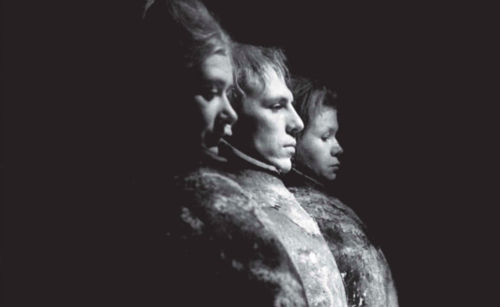
The Collected Shorter Plays of Samuel Beckett Cover Art via Grove Press
Play: The Light
My own interpretation here, rather than a direct version of the devil. Made all the more difficult in that it’s my own interpretation of a work/writer who defies (and rejects) interpretation, but Hell, I want to talk about this anyway. In Samuel Beckett’s 1963 play Play (perhaps even more descriptively titled than Goethe’s prologue), three figures sit on a dark stage, up to their neck in funeral urns. A spotlight swivels between them. When it lands on them, they speak at speed—almost stream of consciousness. It quickly becomes apparent that these three were engaged in a love triangle consisting of a married couple and a mistress. They spill their guts, and then the play begins all over again, even faster. The spotlight is oft spoken of as the play’s fourth character—an interrogator of sorts. A literal lightbringer. Faceless, undefinable, but forcing us to relive and engage with our sins and our carnal selves. This is what, I think, Lucifer should be. Whatever we need to illuminate our darkness and hold its eye. Which is why the character is so darn fractal; trickster, lord, tantruming Romantic anti-hero, or lumbering beast, all of these interpretations fold comfortably into a Satan-shaped whole. Let’s let him loose a little, shall we?
![]()
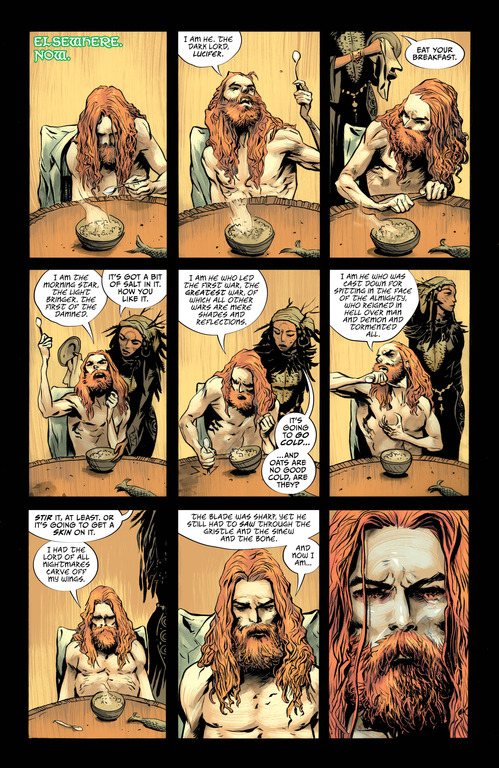
Lucifer #1 Interior Art by Max Fiumara, Sebastian Fiumara & Dave McCaig
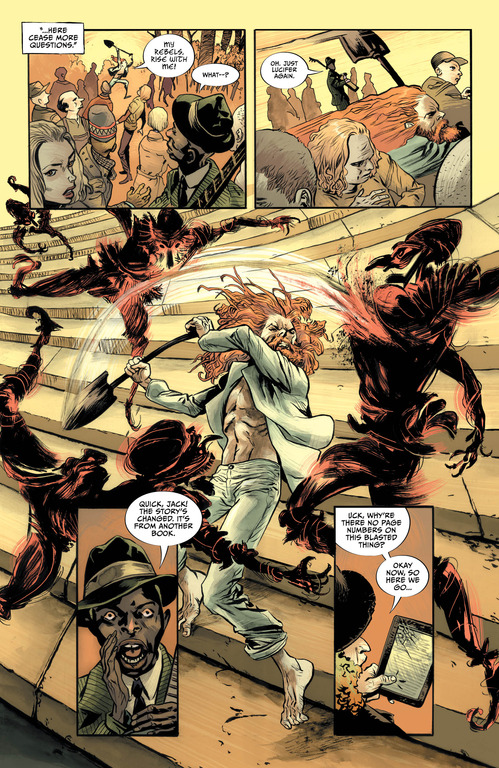
Lucifer #1 Interior Art by Max Fiumara, Sebastian Fiumara & Dave McCaig

Lucifer #1 Interior Art by Max Fiumara, Sebastian Fiumara & Dave McCaig
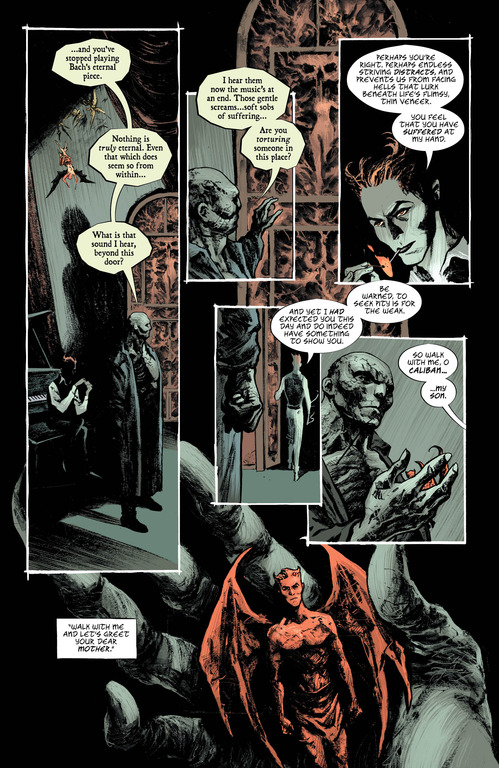
Lucifer #1 Interior Art by Max Fiumara, Sebastian Fiumara & Dave McCaig
